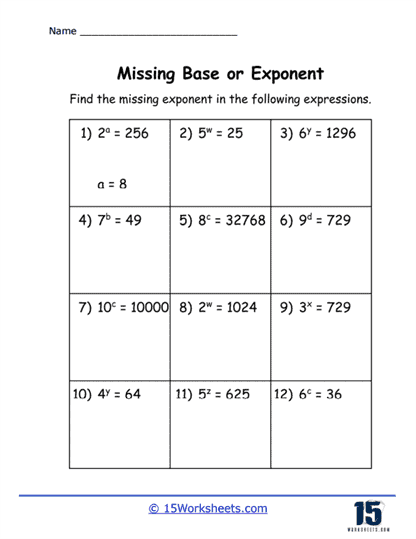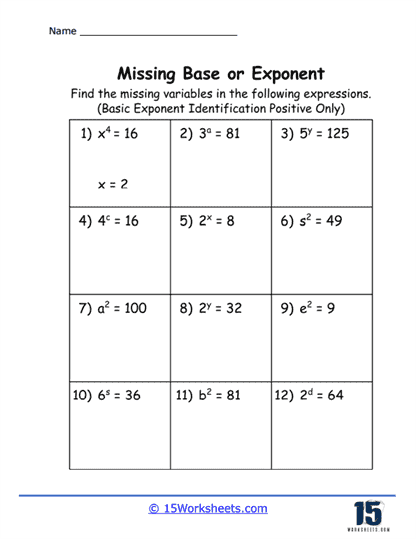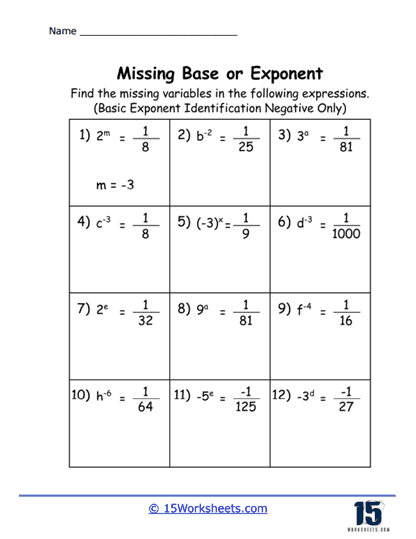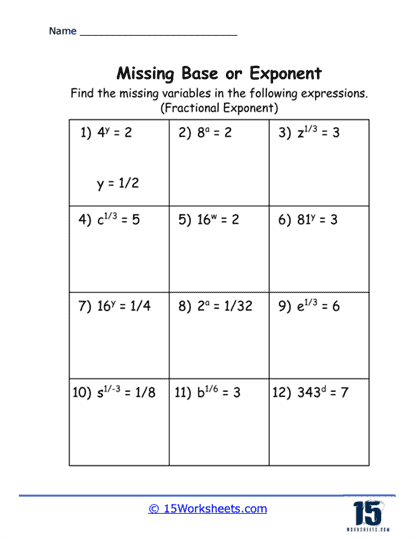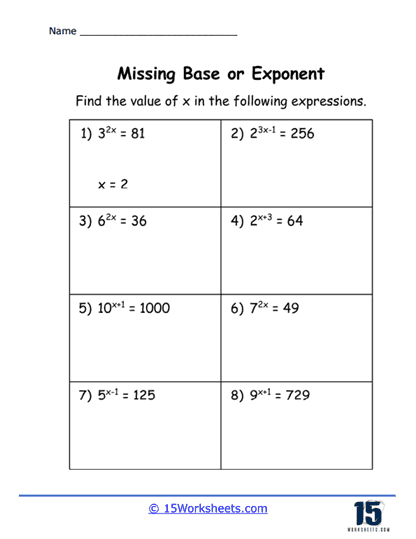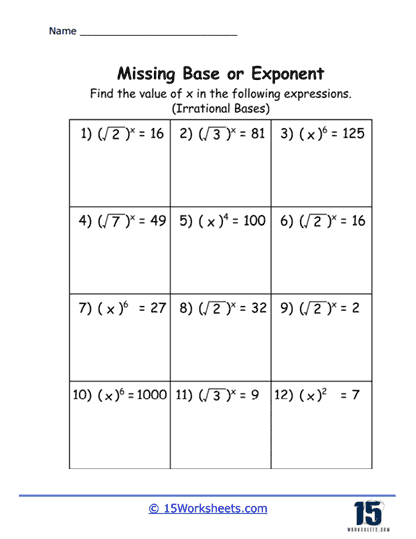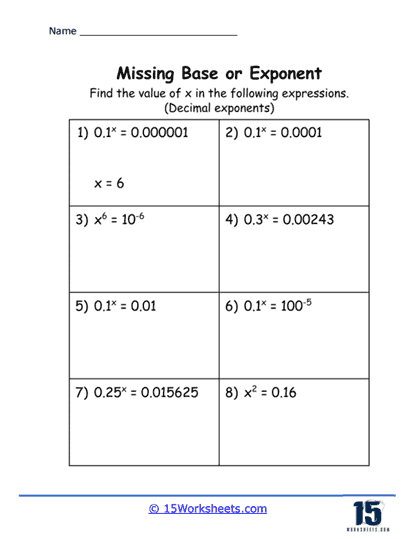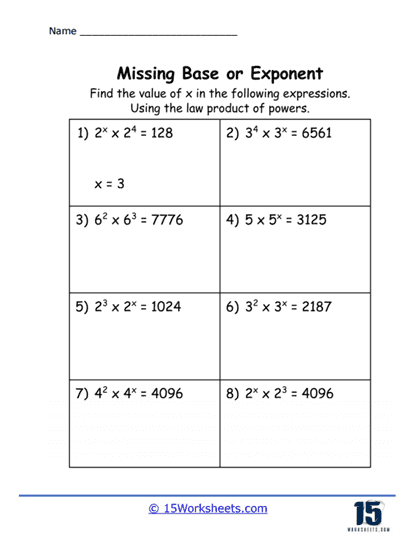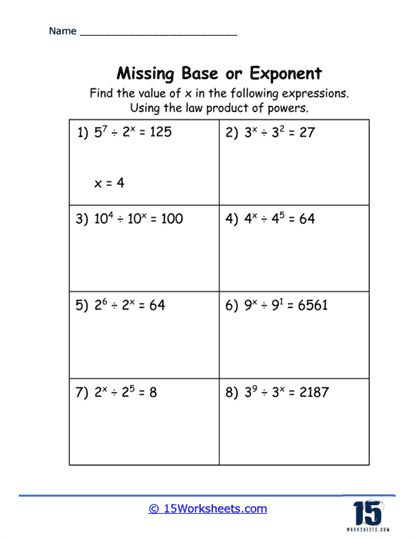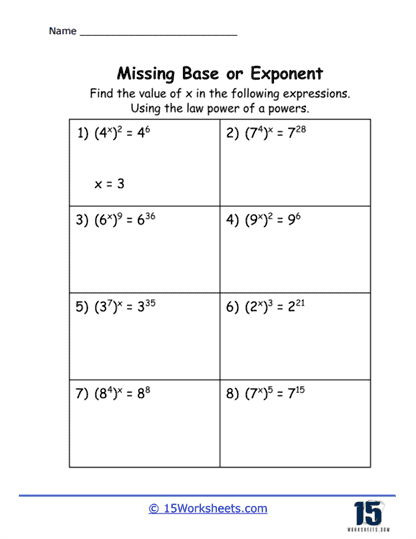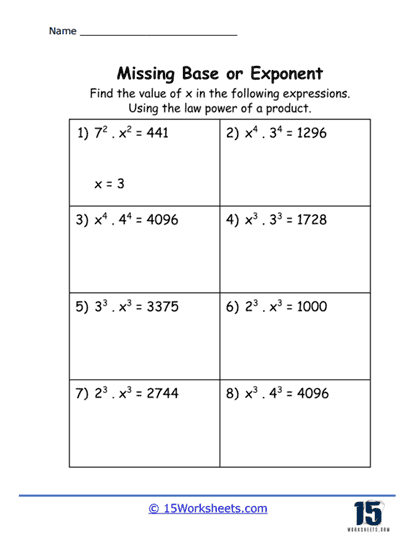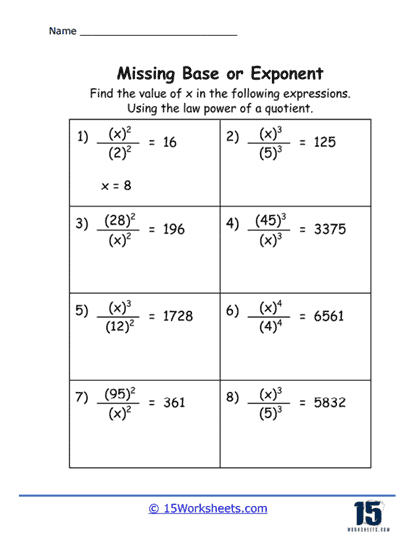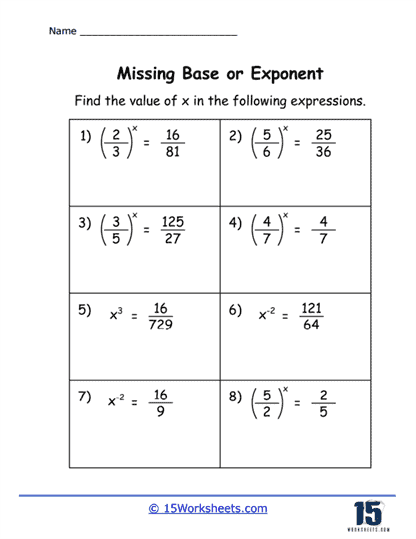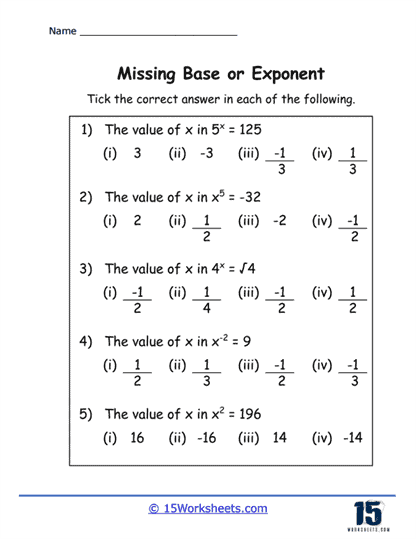Missing Base or Exponent Worksheets
About These 15 Worksheets
Missing Base or Exponent Worksheets are educational tools designed to bolster students’ comprehension and proficiency with exponential expressions, particularly focusing on identifying missing components within these expressions. These worksheets challenge students to apply their knowledge of exponents and their properties to find either the base or the exponent in equations where one of these elements is unknown. This practice is instrumental in developing a deep understanding of exponential operations and the rules governing them.
The variety of exercises found in these worksheets ensures that students can apply their knowledge in different contexts, reinforcing their learning and preparing them for more complex mathematical challenges. Through regular practice, students not only improve their abilities to work with exponents but also develop essential problem-solving, algebraic, and logical thinking skills that are invaluable in their academic journey and beyond. Engaging actively with these worksheets, students can achieve a level of proficiency and confidence in mathematics that will support their success in a wide range of future endeavors.
Types of Exercises
1. Finding the Missing Base – These exercises present students with equations where the exponent is known, but the base is missing. For example, in an equation like x3 = 8, students must determine the value of x that makes the equation true. Solving these problems requires a solid understanding of how exponents work and often involves taking the nth root of a number.
2. Finding the Missing Exponent – In this type of exercise, the base is given, but the exponent is unknown. Students are tasked with discovering the exponent that, when applied to the base, results in a given number. For instance, if the equation is 2x = 8, students need to identify the value of x. This often involves applying logarithmic thinking, even if the students are not explicitly using logarithms at their current level of study.
3. Mixed Problems – Worksheets may also mix both types of missing element problems, challenging students to apply their skills flexibly. For example, one question might ask for a missing base, while the next asks for a missing exponent, requiring students to switch gears and apply different sets of reasoning and calculation.
4. Word Problems – These exercises contextualize missing base or exponent problems within real-world scenarios, such as calculating population growth or decay, financial interest, or the half-life of radioactive materials. This not only tests students’ abilities to find missing values but also their skills in translating a text-based scenario into a mathematical equation.
5. Equations Involving Fractions – Some problems introduce bases or exponents as fractions, adding an additional layer of complexity. These exercises are particularly useful in testing and improving students’ understanding of how to work with fractional exponents and roots.
The Benefits of These Worksheets
Enhances Problem-Solving Skills – Engaging with Missing Base or Exponent Worksheets cultivates students’ problem-solving abilities. By encountering various types of exponential problems, students learn to approach mathematical challenges from different angles, enhancing their ability to think critically and creatively.
Solidifies Understanding of Exponential Rules – These worksheets require the application of exponent rules, such as the product, quotient, power of a power, and negative exponent rules. Regular practice helps students internalize these rules, making it easier to manipulate and simplify expressions involving exponents.
Builds Algebraic Thinking – Finding missing bases or exponents often involves algebraic manipulation, such as isolating variables or applying inverse operations. This strengthens students’ algebraic skills, laying a solid foundation for more advanced mathematics.
Improves Numerical Fluency – Working with exponents, especially when finding missing bases or exponents, often requires performing calculations with both large and small numbers. This practice enhances students’ numerical fluency, making them more comfortable working with a range of numbers and operations.
Fosters Mathematical Confidence – Successfully solving these problems builds students’ confidence in their mathematical abilities. Overcoming the challenges posed by missing elements in exponential equations encourages a positive attitude towards learning and dealing with complex mathematical concepts.
Prepares for Advanced Mathematics – A deep understanding of exponents and exponential operations is crucial for higher-level mathematics, including calculus, financial mathematics, and differential equations. Mastery of the concepts practiced in Missing Base or Exponent Worksheets prepares students for these advanced topics.
Encourages Logical Thinking – The process of finding missing values in exponential expressions requires logical reasoning and deduction. Students must think systematically, applying known rules and properties to uncover unknown quantities, thereby enhancing their logical thinking skills.


